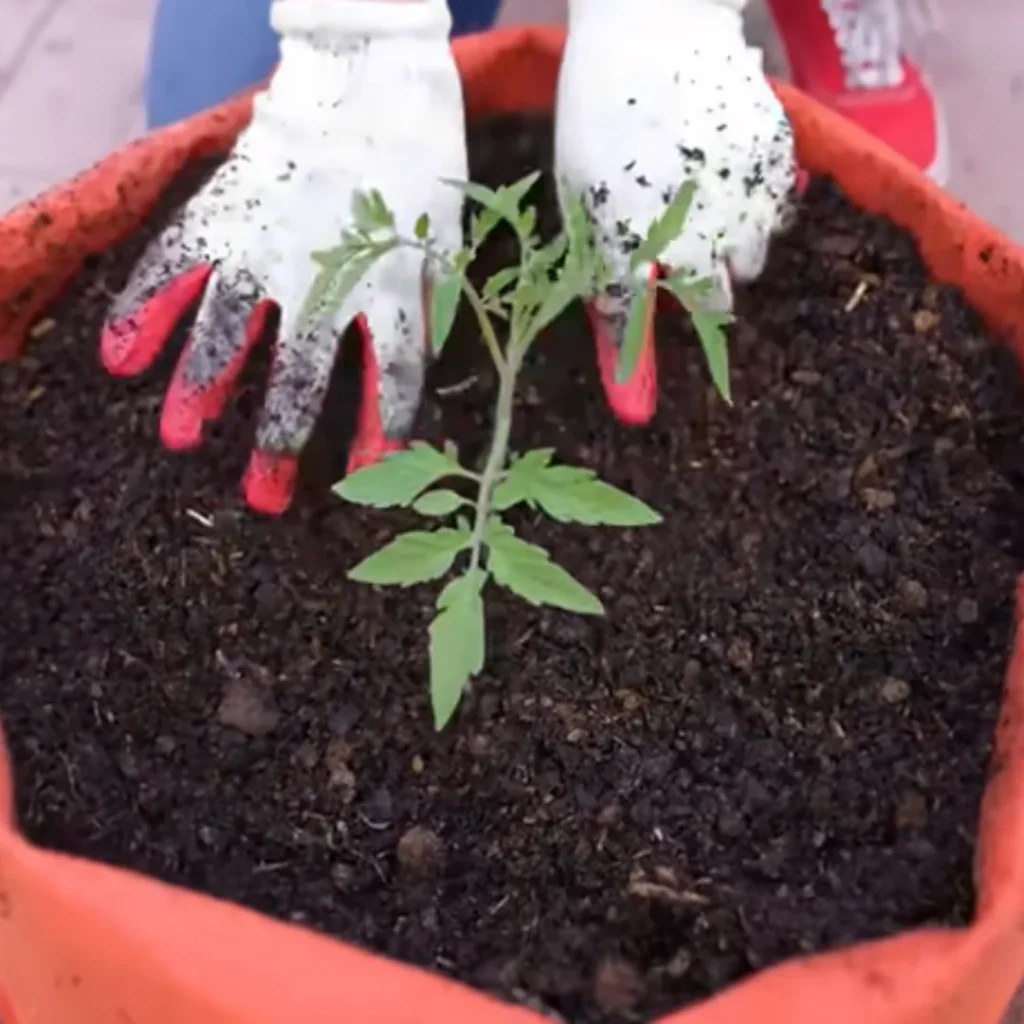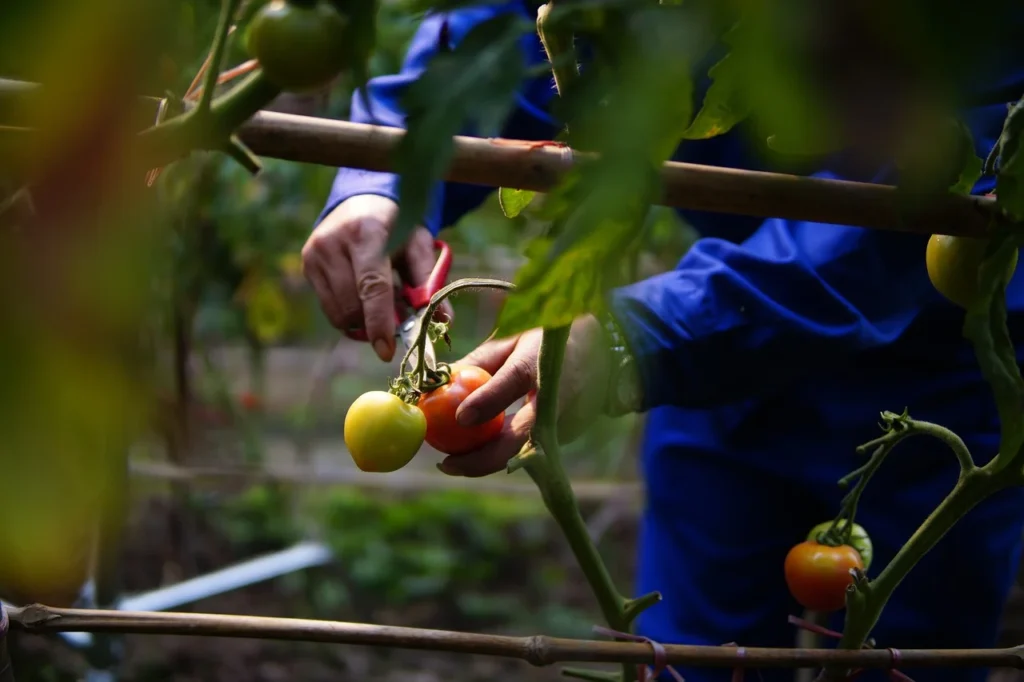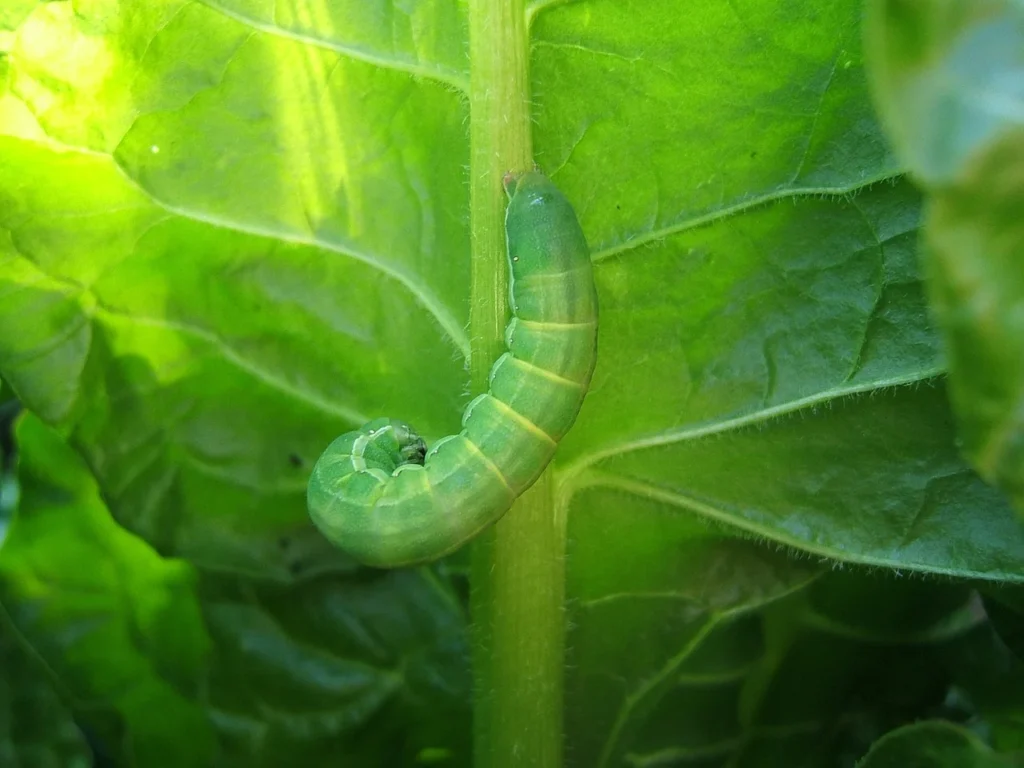Growing tomatoes in containers is a rewarding way to cultivate fresh, flavorful fruits. Don’t have a plenty of space or backyard garden area? Don’t worry. You can enjoy the same even in limited spaces like balconies or patios. Here’s my comprehensive guide on how to successfully grow tomatoes in containers or pots, ensuring you have a bountiful harvest.
Choosing the Right Tomato Variety
Selecting the appropriate tomato variety is crucial for container gardening. Generally, determinate varieties are more suitable for pots because they grow to a fixed size, making them easier to manage in a confined space. Popular determinate varieties include ‘Celebrity,’ ‘Patio Princess,’ and ‘Bush Early Girl.’ These types tend to produce all their fruit in a short period, making them ideal for a single harvest.
Indeterminate varieties, while more challenging, can also be grown in containers with the right care. Varieties like ‘Sungold,’ ‘Sweet 100,’ and ‘Brandywine’ produce fruit continuously throughout the season but require larger containers and more robust support systems due to their vine-like growth.
Selecting the Right Container
The size and material of your container play a crucial role in the success of your tomato plants. I suggest using a container of at least 5 gallons capacity; however, 10 gallons or more is ideal for larger varieties. The diameter should be 10-14 inches for a strong root system and for setting up stakes or a cage. Avoid small containers, as they can restrict root growth, leading to poor plant health and reduced fruit production.
There are several options when choosing a container for your tomatoes. You can choose an earthen pot, plastic pot, or geo bag. There are some disadvantages to using earthen pots: they are heavy, making them difficult to move when you need to optimize sunlight exposure for your plants. Plastic containers are easier to handle but avoid black plastic as it can absorb and retain heat, which can cause root damage.
I think a geo bag is the best option. It retains moisture better and does not heat up as quickly in the sun. Its drainage and ventilation system is excellent, supporting a healthy root system and robust plant growth. If you choose something other than a geo bag, your container should have adequate drainage holes to prevent waterlogging, which can cause root rot.
Don’t forget to group the containers together. It will be easier for you to water and maintain your plants, and it will also provide some shade and help retain moisture.
Soil Preparation
Tomatoes thrive in well-draining, nutrient-rich soil. Using garden soil in your pot would not be a good choice, as it is heavy and might harbor spores and diseases. Rather, a high-quality potting mix specifically designed for vegetables is preferable. When I prepare soil for my plants, I usually incorporate only compost into the soil. It is the best ready food for my plants. However, you can also use a slow-release fertilizer at the time of planting to provide a steady supply of nutrients.
Sunlight and Temperature
Tomatoes are sun-loving plants that require at least 6-8 hours of direct sunlight each day. Place your containers in the sunniest spot available, and consider rotating the pots periodically to ensure all sides of the plant receive light.
Tomatoes also prefer warm temperatures. They will not thrive in cold weather, so avoid planting them outdoors until nighttime temperatures consistently stay above 50°F (10°C). If a cold snap is expected, protect your plants with covers or bring the containers indoors temporarily.
On the other hand, if the temperature rises above 90°F, tomatoes may stop flowering and fruiting. Therefore, provide shade during high temperatures.

Planting Tomatoes
Start planting your seedlings at least two weeks after the last frost date in your region. Make sure the daytime temperature is at least 70°F and the nighttime temperature is 50°F. Unlike other plants, tomato roots grow all along the stem, so dig a deep hole to cover the stem nearly up to the first set of true leaves. This process will give you a strong root system, which will support your plant and produce plenty of fruit. Water generously so that the seedlings manage to overcome the stress.

Mulching
Add a layer of at least 2 inches of mulch. It will cover the top of the soil and assist in retaining moisture. You can use straw, grass clippings, shredded bark, chopped leaves, compost, or other organic materials for mulching. These materials decompose and slowly release nutrients into the soil. Thus work as a fertilizer source.

Providing Support
Whether you are growing a determinate or indeterminate variety, you need to use stakes or a cage for supporting your plants. Try to set up the support system at the time of planting. Otherwise, if you introduce them when your plant is grown up, you might damage the root system.
While choosing a cage for the determinate variety, make sure it is at least 20 inches tall and 10 inches wide. On the other hand, larger varieties need a cage of at least 38 inches tall and 14 inches wide.
As the plants grow, gently tie the stems to the supports using tags or soft ties to avoid cutting into the plants.
Watering
Consistent watering is crucial for healthy tomato plants. Irregular watering can lead to issues like blossom end rot or fruit cracking. Water deeply, ensuring that the moisture reaches the root zone.
A good practice is to water in the morning, allowing the plants to hydrate before the heat of the day. However, in container, moisture evaporates quickly compared to garden soil, so you might need to water twice a day.
Self-watering containers can help maintain consistent moisture levels. If using traditional pots, check the soil regularly by inserting your finger about an inch deep; if it feels dry, it’s time to water.
Fertilization
Tomatoes are heavy feeders, so regular fertilization is necessary. Use a balanced, water-soluble organic fertilizer every two weeks during the growing season. Alternatively, side-dress your plants with compost in mid-season to replenish nutrients.
Pruning
Pruning is essential for managing the growth of indeterminate varieties in containers. Remove the suckers (small shoots that develop between the branches or along the stem) to direct more energy into fruit production rather than excessive foliage. When fruit emerges, prune the leaves below the fruits. However, avoid over-pruning, as the leaves are necessary for photosynthesis.
Maintenance
Regularly inspect your plants for signs of disease or pests. Container-grown tomatoes can be susceptible to blight, aphids, whiteflies, and other issues, so early detection and treatment are key to maintaining plant health.

Harvesting
Tomatoes are ready to harvest when they reach full color and are slightly firm to the touch. Not all cultivars turn red when ripe; ripe tomatoes can be red, yellow, orange, reddish-black, or other colors depending on the variety.
For the best flavor, allow them to ripen fully on the vine. Regular harvesting encourages the plant to produce more fruit, so check your plants daily once they start producing.
If you’re growing determinate varieties, expect a single, large harvest. Indeterminate varieties will continue producing until the first frost, allowing you to enjoy fresh tomatoes throughout the growing season.
Troubleshooting Common Issues
Growing tomatoes in containers comes with its own set of challenges. Common problems include overwatering, under-watering, and nutrient deficiencies. You need to take prompt action to maintain your plant’s health and production. Here are some suggestions to address these issues:
- Common pests: Your plants may be affected by common pests like aphids, whiteflies, and leaf miners. Use insecticidal soap or neem oil to manage these pests.
- Overwatering: Overwatering can make the soil soggy, inviting fungus and causing blight. Test your soil by pressing it with your finger; if it is already sufficiently wet, refrain from watering.
- Underwatering: Underwatering can dry up the potting soil and cause tomato plants to wilt. The root system may also be damaged, which is a root cause of blossom end rot. Fruit size and yield may also be reduced. To overcome these issues, again, test the soil with your finger. If the top 1 inch of soil is dry, it is time to water. Always try to keep the soil consistently moist.
- Nutrient deficiencies: If you see that your plant is not growing as expected, or if the leaves are becoming yellowish or you experience a poor harvest, it may be due to nutrient deficiency. There are various reasons for nutrient deficiency, such as lack of nutrients in the soil, under-watering, or imbalanced pH levels. Find out the root cause and take steps accordingly.
- Diseases: Various diseases can affect the health and productivity of your plant. Investigate and address the issue promptly to prevent further damage. To know more about diseases, follow my other articles.
Growing tomatoes in containers can be incredibly rewarding, offering the opportunity to enjoy fresh, home-grown juicy tomatoes even in small spaces. By choosing the right varieties, providing appropriate care, and monitoring for potential issues, you can enjoy a plentiful harvest from your potted plants. The above-mentioned approach I have mentioned, coupled with your patience and attention, will yield the best results and allow you to savor the flavor of your own home-grown tomatoes throughout the season.





